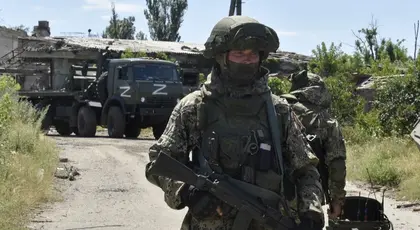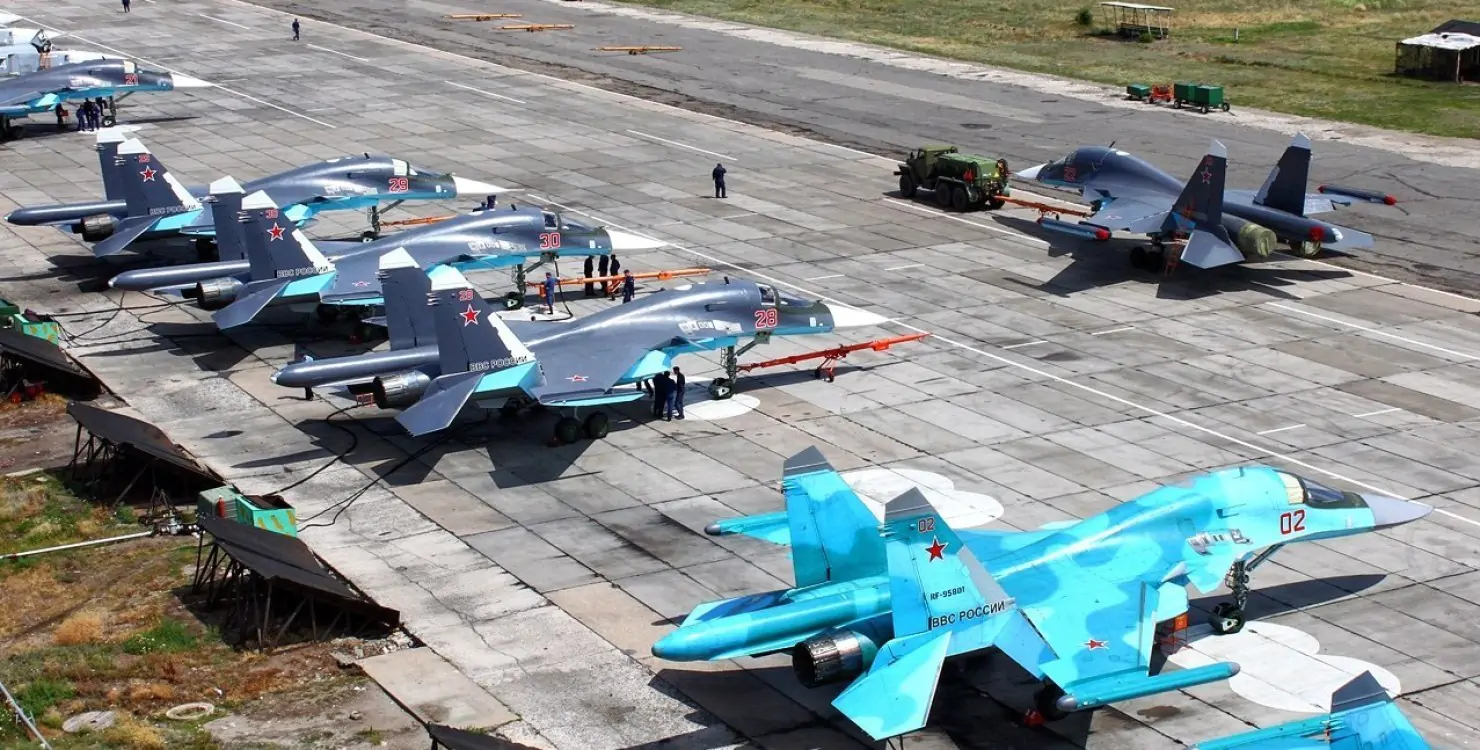The formation and use of private armies in Russia is illegal, so of course, Moscow has been using them to carry out most of its “off-the-book” dirty work for decades. With its military adventures in the Middle East, Africa and most notably in support of both of its illegal invasions of Ukraine, in 2014 and 2022, the rate at which Russia created new PMC-like units really took off as Putin’s foreign adventures needed more manpower to throw into battle.
- Read the newest Ukraine news stories published today.
- Get the newest Ukraine news reports as of today.
A Kyiv Post article in April, using open-source data, identified 37 Russian PMCs of which 27 were considered to be active and 11 of which came into being since the 2022 full-scale invasion. A list of the PMCs that have been created in the last 30 years are summarized in the table below.
| Year formed | Private military companies |
| 1992 | Tsar's Wolves |
| 1998 | Anti-terrorist Eagle |
| 2002 | Russian Imperial Movement |
| 2005 | RSB Group |
| 2008 | PMC Global |
| 2011 | E.H.O.T, Vega (Vympel) |
| 2013 | Wagner, Slavic Corps |
| 2014 | MAR, Yastreb, ATK Group, Rusich, LLC CHOA "CHVK", PMC Black Sea, PMC Strazh |
| 2015 | Polite People, Byzantium |
| 2017 | ISIS Hunters (Al-Sayyad), Sewa Security Service, Andreyevesky Krest |
| 2018 | Patriot, Redoubt, Moran Security Group, Ferax, Shield |
| 2022 | Akhmat, Tiger Battalion, BARS-13 (Russian Legion), ODSSBr Veterans, PMC Tavrida (Tavrida Battalion), Berkut PMC, Zvezda PMC, Storm special forces |
| 2023 | Convoy, Gazprom, Private Military Medical Company |
| Source: Molfar | |
One of the groups, Patriot, is owned by Shoigu himself, which just shows how important and lucrative it has become for Kremlin-linked oligarchs to build a private army and lease them back to the state.
Molfar's OSINT community has identified over 30 countries where Russian PMCs are currently or were recently active.

Countries where there are reports of Russian PMC activity
Source: Molfar
As the “big two”, Prigozhin’s Wagner Group and the “Kadyrovtsy army”, led by Ramzan Kadyrov, head of the Chechen Republic grabbed the headlines and were allowed by the Kremlin to become ever more powerful, a number of oligarchs and officials jumped on the bandwagon. A report by the Institute for the Study of War (ISW) commented that Putin seemed “fully committed to recruiting irregular forces to avoid calling up mobilization.”

Azerbaijani Passenger Airline Shooting: MH17 Déjà Vu
The use of PMCs provides the Kremlin with much-needed combat troops, avoids the need to conscript its citizens and allows them to hide the levels of casualties being suffered. The heads of these companies get government contracts, gain influence and favor with Putin and have a body of heavily-armed men at their disposal.
Vladimir Osechkin, from the Russian watchdog group, Gulagu.net, says these are not true PMCs as they are so closely aligned with the government: “They train at state military bases, use state military equipment and are run by state-linked businessmen,” and as Putin himself confirmed, in respect of Wagner, are (handsomely) funded by his government. It should have been no surprise that raids on Wagner’s offices in St. Petersburg uncovered millions of dollars, in a range of currencies, both in the building and in vehicles parked around the premises.
While the term PMC is relatively new, the use of mercenaries by Russia is not. In his treatise “The Russian State’s Use of Irregular Forces and Private Military Groups: From Ivan the Terrible to the Soviet Period”, Sergey Sukhankin details how the Tsars, then the Soviet Union employed, what he terms as “irregular forces” to fight, its often-undeclared wars.
He traces this from the hiring by Russian merchants of Turkish mercenaries during the Livonian War (1558–1583), which paved the way for Russia’s ultimate conquest and colonization of all of Siberia and the Far East; the use of Swedish mercenaries during the Time of Troubles (1598–1613) to drive out Polish forces from Moscow which gave rise to the Romanov Dynasty (1613); the use of a host of mercenary groups including Cossacks from an area which stretched from the Black Sea, the Urals, and Siberia from the mid 19th century right up to the 1917 revolution; the transformation of these mercenary forces into the “Spetsnaz” special forces from the revolution onwards.
Sukhankin suggests this widespread reliance on “soldiers of fortune” was based on three factors, which hold true for the current dependence on PMCs.
Firstly, was the sheer size of the Russian Empire, which required constant surveillance, control of the territory and protection of its borders. Secondly, was the need to integrate conquered non-Russian peoples into the architecture of the Russian state. Thirdly, in achieving the first two requirements was a need to protect the Russian people by letting the irregulars fight and die on their behalf.
Another Academic, Anna Borshchevskaya, says the Soviet Union continued to rely extensively on non-state actors to prosecute its military activities using the so-called “Добровольная Народная Дружина” (voluntary people’s squads) both within Russia, to supplement the police and externally alongside “partisans” to achieve its military and policy objectives in countries of interest, to gain influence and support regimes that would benefit the USSR.
As the Soviet Union crumbled, so-called “volunteer detachments” appeared to protect the interests of domestic oligarchs and at the same time the Russian military attempted to make the Spetsnaz “an all-volunteer force,” which it did not truly become until the dissolution of the union. At the end of the 1990s, it was reported that the then General Staff Chief Anatoly Kvashin created the first center of special operations outside of Moscow under direction of the defense ministry’s main intelligence directorate (GRU).
We can see that the use of PMCs in Vladimir Putin’s Russia is not new, it builds on centuries-long Russian practice but what is different is how the balance of power began to shift.
Following the Wagner debacle Leonid Slutsky, First Deputy Chairman of the Russian Duma's Committee on International Affairs says “The country does not need any PMCs and their like.” He wants Russia to build a seven-million-strong professional army and to end its reliance on mercenaries.
Slutsky believes the Kremlin has become too reliant on the mushrooming number of PMCs to fight its overseas wars. In doing so he wants to go further than the move by the Russian defense ministry plan to bring mercenary groups under control by the use of direct contracts. This proposal was led by Sergei Shoigu, which Prigozhin felt was aimed directly at him because of his strident, foul-mouthed criticism of the defense minister’s conduct of the war and one of the factors that led to his mutiny.
Now that Prigozhin has been exiled to Belarus, the group has been told to hand over its heavy weapons and its members have been given the option of joining him in exile, returning home or joining the regular forces – the question is what will happen to both Wagner PMC and more widely to the plethora of groups that act on behalf of Russia throughout the world.
President Putin may have woken up to the danger of using private armies such as Wagner on his own doorstep but is likely to want to retain the ability to project his and Russian interests overseas, where Moscow does not want a formal presence, through the continued use of PMCs.
The appearance of foreign minister, Sergei Lavrov, speaking to Russia’s African allies from Moscow’s foreign broadcast service, tried to reassure them that Wagner’s operations would continue. “This work, of course, will continue,” he said.
It seems unlikely that Putin will take notice of Slutsky’s intervention but it seems he will be more cautious in allowing its leaders to have the type of power base that Prigozhin developed and he will want to keep them at more than arm’s length.
If so, then this may also have a positive benefit for Ukraine as, after all, Wagner was the only body that managed to achieve anything approaching military success – and now they’ve gone.
You can also highlight the text and press Ctrl + Enter






